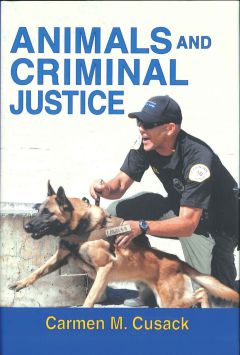Results
| Title | Citation | Alternate Citation | Summary | Type |
|---|---|---|---|---|
| KS - Vehicle, animal - 60-5401. Immunity for damage to motor vehicle | K. S. A. 60-5401 | KS ST 60-5401 | This Kansas law, effective in 2018, provides immunity for civil liability for damage to the motor vehicle if a person enters a motor vehicle to remove a vulnerable person or domestic animal. “Domestic animal” means a dog, cat or other animal that is domesticated and may be kept as a household pet, but does not include livestock. Several conditions must be met before a person is granted immunity under the law. | Statute |
| Eriksson v. Nunnink | 233 Cal.App. 4th 708 (2015) | 183 Cal.Rptr.3d 234 (2015) | In this case a deceased horse rider's parents (Erikssons) have brought wrongful death and negligent infliction of emotional distress actions against the rider's coach after she fell from her horse in competition and died. Due to a release form signed by the parents, the coach (Nunnink) could only be held liable if he was found grossly negligent. The parents attempted to show that the coach was grossly negligent in allowing the rider to compete after injuries sustained by the horse. This court concluded that the Erikssons failed to establish that Nunnink was grossly negligent. The court affirmed the judgment. | Case |
| MI - Endangered - Part 365. Endangered Species Protection | M. C. L. A. 324.36501 - 07 | MI ST 324.36501 - 07 | The state of Michigan defines an endangered species as "any fish, plant life, or wildlife that is in danger of extinction throughout all or a significant part of its range, other than a species of insecta determined by the department or the Secretary of the United States Department of the Interior to constitute a pest whose protection under this part would present an overwhelming and overriding risk to humans." Violation of the taking provision constitutes a misdemeanor punishable up to 90-days in jail and/or up to $1,0000 in fines. | Statute |
| FL - Department of Agriculture & Consumer Services - Enforcement | West's F. S. A. 570.15; 570.051; § 570.65 | FL ST § 570.65, 570.15, 570.051 | This set of laws authorizes the establishment of the Office of Agricultural Law Enforcement within the Department of Agriculture & Consumer Services for the enforcement of laws relating to wild or domesticated animals or animal products. Law enforcement officers employed by the Department have statewide jurisdiction and have full law enforcement powers granted to other peace officers of the state, including the authority to make arrests, carry firearms, serve court process, and seize contraband and the proceeds of illegal activities. It is a misdemeanor of the second degree to threaten, interfere with, or impersonate an enforcement officer or other employee of the Department. | Statute |
| Argentina - Trade, wildlife - Ley 22.344, 1980 | LEY Nº 22.344 | This is the law by which Argentina approves and adopts the "Convention on International Trade in Endangered Species of Wild Fauna and Flora" (CITES), signed in the city of Washington on March 3, 1973, with its Appendices and Amendments. The purpose of CITES is to ensure that international trade in specimens of wild animals and plants does not threaten their survival. | Statute | |
| Animals and Criminal Justice |
|
Policy | ||
| Earth Island Institute v. Evans | 2004 WL 1774221 (N.D. Cal. 2004) (No reporter citation) |
The Secretary of Commerce made a final finding that the intentional deployment on or encirclement of dolphins using purse seine nets did not have a significant adverse effect on any depleted dolphin stock in the Eastern Tropical Pacific Ocean. Several organizations challenged that finding under the Administrative Procedures Act, and the matter came before this Court along with simultaneous motions for summary judgment from both the plaintiff and defendant. The Court concluded that Plaintiff's met their burden of demonstrating that they are entitled to judgment, and the finding of the Secretary is set aside. |
Case | |
| AL - Cruelty - Article 10. Bestiality | Ala. Code 1975 § 13A-6-220 - 221 | AL ST § 13A-6-220 - 221 | This Alabama section enacted in 2014 prohibits people from knowingly engaging in or submitting to any sexual conduct or sexual contact with an animal. The law also prohibits the furtherance of such activity or permitting any sexual conduct or sexual contact with an animal upon premises under his or her control. Violation is a Class A misdemeanor. | Statute |
| McDonald v. Ohio State Univ. Veterinary Hospital | 644 N.E.2d 750 (Ohio Ct.Cl., 1994) | 67 Ohio Misc.2d 40 (1994) |
After defendant filed a stipulation admitting liability for a botched surgery on defendant's show dog that ultimately led to euthanization, a trial was held as to the issue of damages. Evidence adduced at trial showed that "Nemo" had been trained by plaintiff as a Schutzhund or "sport dog" in Schutzhund schooling. The court noted that while dogs are considered personal property in Ohio and market value is the standard award for such personal property, market value in this case was merely a "guideline." In addition to the loss of the specially trained dog, the court also found significant the loss of stud fees for the dog and potential future gains in sustaining the trial court's award of $5,000 in damages. |
Case |
| Bogart v. Chapell | 396 F.3d 548 (4th Cir., 2005) |
A woman was housing hundreds of animals in her residential home, the animals were seized and more than two hundred of them were euthanized. The woman brought a section 1983 claim against the county sheriff's department and human society. The trial court granted defendants summary judgment and the Court of Appeals affirmed holding no viable due process claim existed arising from the euthanization. |
Case |
